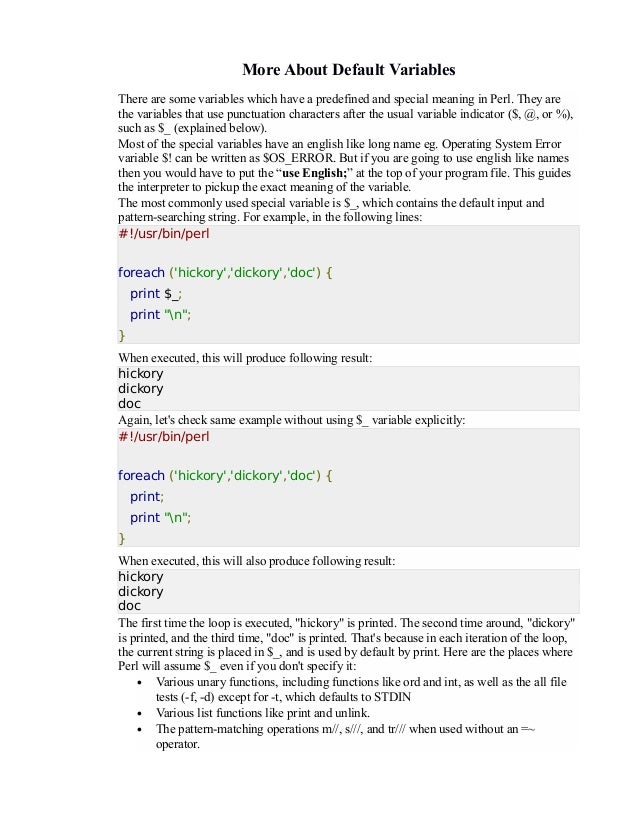

Remember, there's more than one way to experience Perl. If you're interested in learning Perl or getting reacquainted, there's a great community, including forums, websites and IRC channels, as well as the books mentioned above. It's better suited as a reference, although it includes a tutorial. "Programming Perl," which includes Larry Wall as one of its authors, is considered the bible of Perl.
PERL PROGRAMMING LANGUAGE FOR FREE
Another good one, "Modern Perl," is available online for free and attempts to negotiate around Perl's pitfalls. One of the most popular books is "Learning Perl" by Randal L. There are a number of ways you can learn to use Perl.
PERL PROGRAMMING LANGUAGE CODE
Because it's a scripting language, the code in Perl is visible to anyone who wants to see it, which can be a problem if you don't want people to steal your application code. It's best to stick to simpler algorithms, use self-explanatory variable names and use good comments. Just remember that just because you can write your program one way doesn't mean you should. On the other hand, the Perl community has developed some best practices to mitigate this problem. Because Perl gives you a lot of freedom in how you can structure your program, it's very easy to create a program that, if you go back and look at it six months later, you'll struggle to remember what it does. The main pitfall of Perl is its main advantage: flexibility. You can find libraries for doing just about any programming task you can think of, from text processing to complex mathematical analysis.
PERL PROGRAMMING LANGUAGE ARCHIVE
The hub for libraries is CPAN, or the Comprehensive Perl Archive Network. The other major feature is Perl's large library support. Perl is designed so that anyone with some programming experience can pick it up and get productive almost immediately. That means you can indent blocks as you see fit, as you can with C. The language also doesn't enforce any particular indentation style, as Python does. Much like a foreigner with a heavy accent and less-than-perfect syntax can be well understood, Perl attempts to do the same thing through a principle called "Do What I Mean" (DWIM). If you're using a Linux or Unix system, it's probably already pre-installed.īecause Perl's creator, Larry Wall, comes from a linguistics background, he also designed the language to be forgiving. It's available for nearly every operating system ever made. You can use it as a replacement for shell scripting, much as Perl was traditionally used, or to build complex applications. You can solve your problem using procedural programming, as you would in C, or using object-oriented programming, or any way you wish, really. Perl doesn't force any particular programming style on programmers. The motto of the Perl community is "There's More Than One Way To Do It," or TMTOWDI (pronounced "Tim Toady"). The reason Perl continues to thrive is its extreme versatility and flexibility. There are also a number of books available on the language. Now it's been split into many pages, covering everything from basic syntax to regular expressions to the object system. The original man page runs to about 15 printed pages. Perl's continued success is shown by the length of its documentation. Wall and the Perl developers are hard at work on Perl 6 as well.
/warning--data-transfer-in-progress-507065943-59c6d2a70d327a001141794d-5bb792f246e0fb0051a88f9c.jpg)
As of 2017, the most current version of Perl is Version 5, which is still being improved despite being introduced three decades ago.


 0 kommentar(er)
0 kommentar(er)
